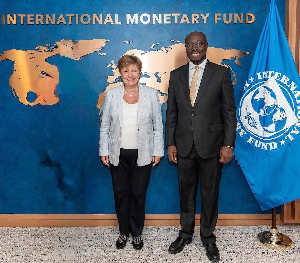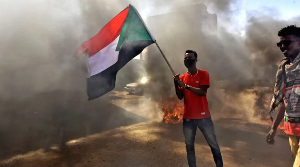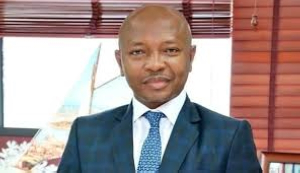Business News of Monday, 6 June 2016
Source: B&FT
Energy crisis has blurred future for miners – Awotwi
The energy crisis has left the mining industry uncertain of the future that lies ahead, said Mr. Kweku A. Awotwi, an energy and power expert.
He indicated that for long lead-time capital intensive businesses, such as mining, uncertainty about the security and stability of one’s power supply impacts significantly on capital investment, and decisions one has to make to ensure a company’s future.
He insisted that the country is facing energy deficits, saying: “By all accounts, the 2006 -2007 episode was relatively short, 12 months, but severe; the current episode that many would argue we’re still in is in its fourth year, and has had a disproportionately greater impact on the populace”.
Mr. Awotwi, who is the immediate past-CEO of the VRA, explained that in 2006 the country had an installed capacity of 1,800MW: 1,200 MW of hydro and 630 MW of thermal, including the newly-installed Mines Reserve Plant that four mining companies built during the energy crisis of that time and subsequently handed over to the VRA.
Ten years later in 2016, the nameplate capacity has risen to 3,300MW, an 80% increase - (3,500MW if you include the recently-completed Sunon Asogli expansion); 1,600MW of hydro and another 1,700MW of thermal. Hydro capacity has increased by 33%, but thermal capacity has almost tripled, a 170% increase.
He said the rise in gold prices – and all other commodity prices– did herald a boom time for gold and other commodities, marking the period of a global super-cycle, and Ghana’s gold production peaked in the 2012?2014 period to 3.2 million ounces, falling back down to current levels as the gold price also fell.
Mr. Awotwi observed that 10 years ago this month the gold price was trading at US$560/oz.–less than half what it is today with gold prices at over US$1,200/oz.
“Today, we think the mining industry is in a slump from the record highs of US$1,900/oz we saw four years ago. But, back then – in 2006 –gold price of US$560/oz was at unprecedented high from the lows of below US$300/oz the 3?4 years before!
“Ten years ago, in 2006, the country officially mined and produced 2.2 million ounces; last year, the number was 2.8 million ounces, a 40% increase in production, compared to a doubling of the gold price in the comparable period.
“Correspondingly, the value of gold mining exports has gone from US$1.3billion in 2006, to US$3.3billion last year, a three?fold increase in value thanks to the large price changes in the intervening period,” he said.
Volta River Authority (VRA), in the period that followed from 2008–2014, generated an average of 7,500gWh/year, a good 22% above what has traditionally been thought of as VRA’s long?term average annual generation of 6,100gWh/year.
Available data indicate that total investment into the mining sector from 1980 to 2015 was some US$16billion as the sector currently contributes 14 percent of government domestic revenues as captured by the Ghana Revenue Authority’s Domestic Tax Division.
A speech read for the Minister for Lands and Natural Resources, Nii Osah Mills, said the country has the requisite environment that serious investors need.
This, he said, includes availability of abundant resources with basic geo-scientific data; political stability; an attractive investment framework; and legislative and institutional frameworks to reduce corruption and enforce the rule of law and transparency in the management of our mineral resources.
The speech further said the country has a robust, transparent, effective and time-tested legal framework that is friendly for investments in the mining sector.
“Government will continue to work at improving its facilitation role while working with all other stakeholders toward achieving sustainable investments in the sector. I challenge all other stakeholders to play their part, so that from there we can foster sustainable development through mining,” Minister Mills remarked.
The conference was under the theme ‘Sustaining Mining and Power Investments: Meeting Stakeholder Expectations in a Challenging Global Environment’.












